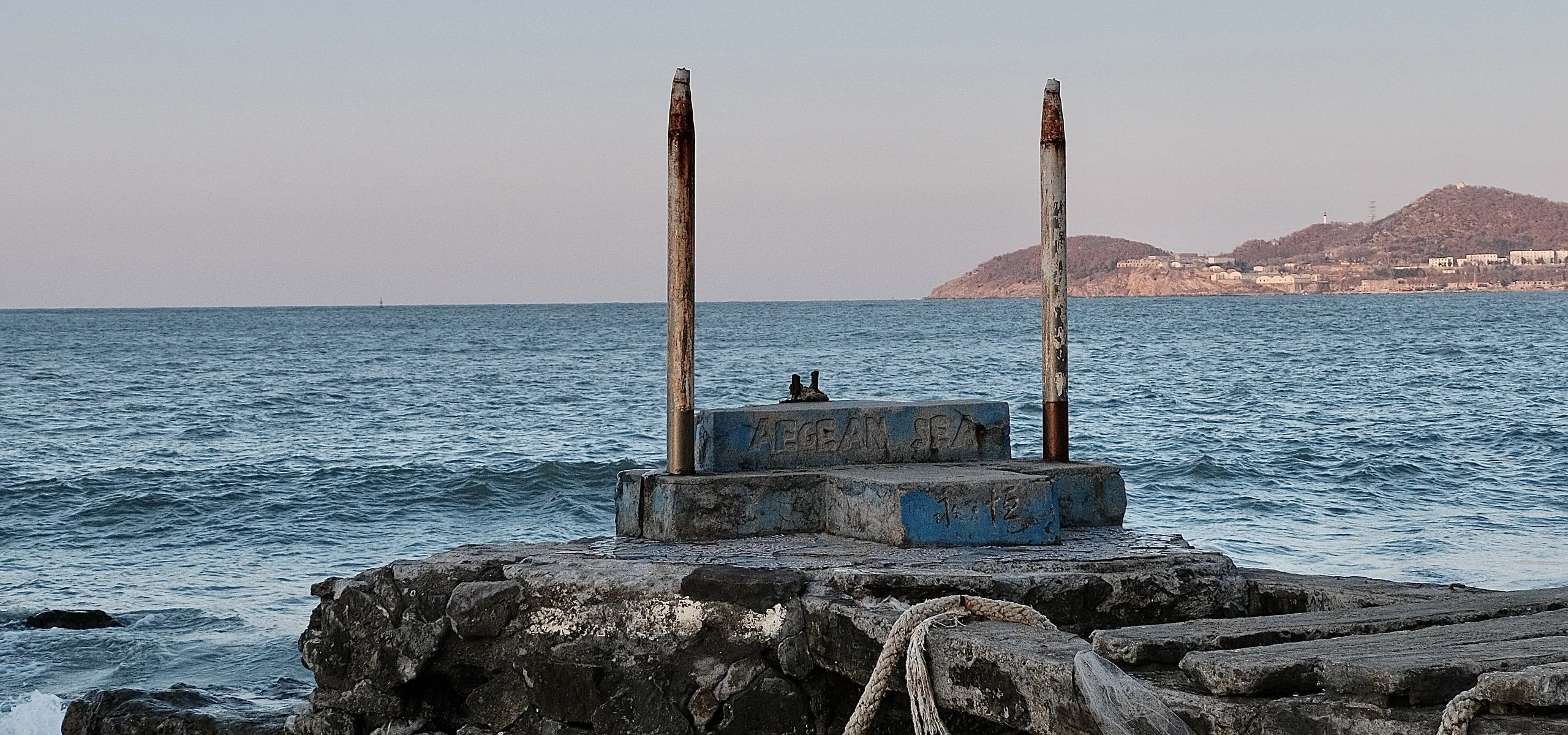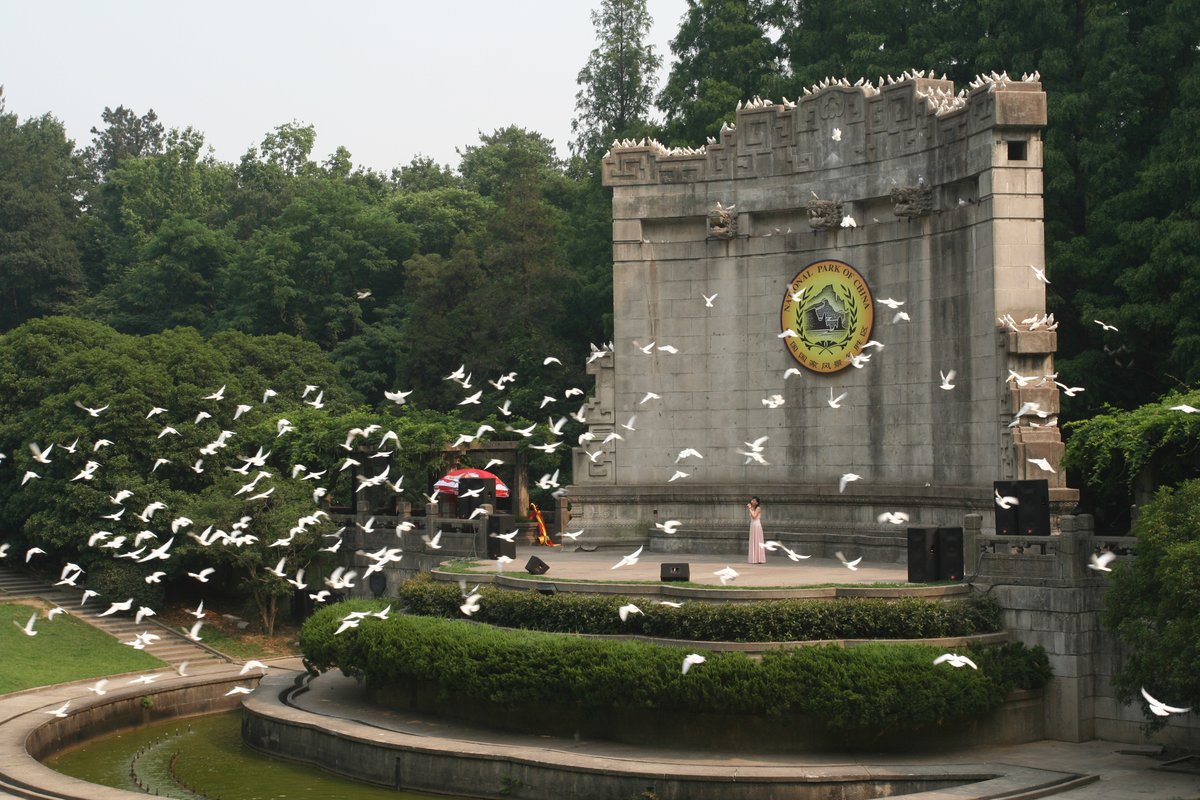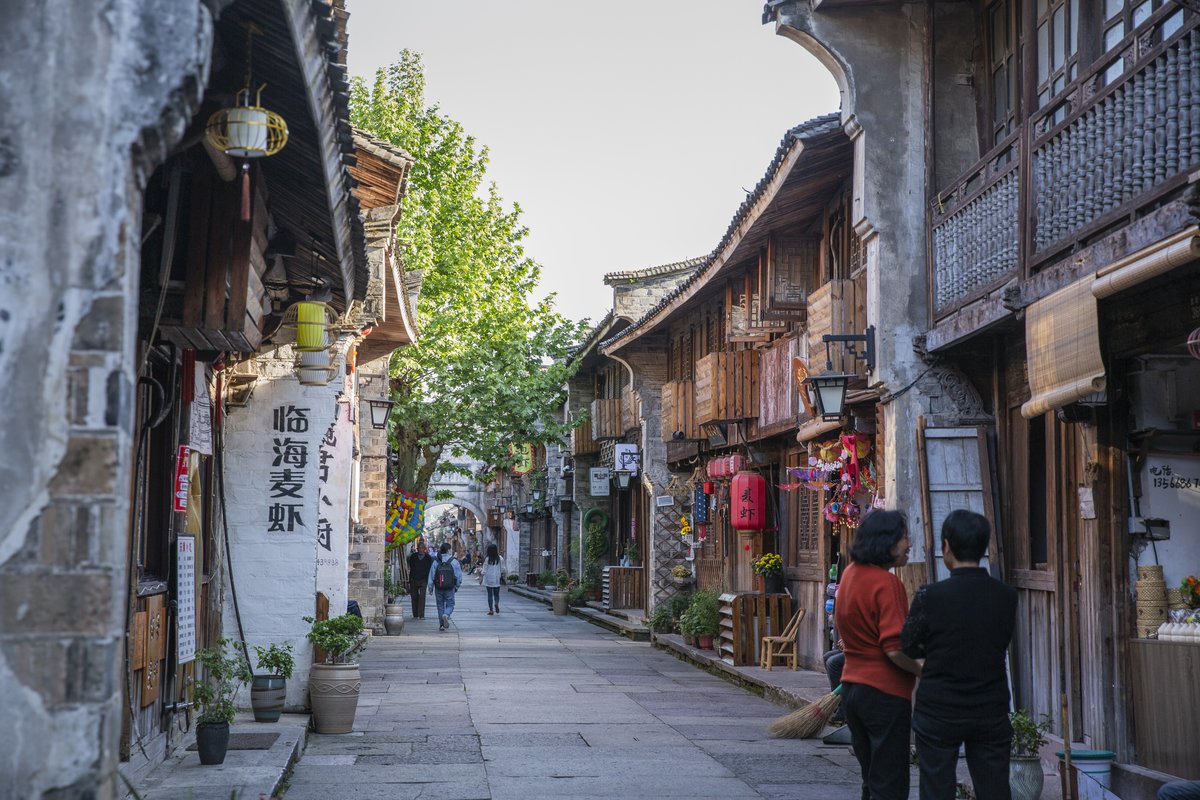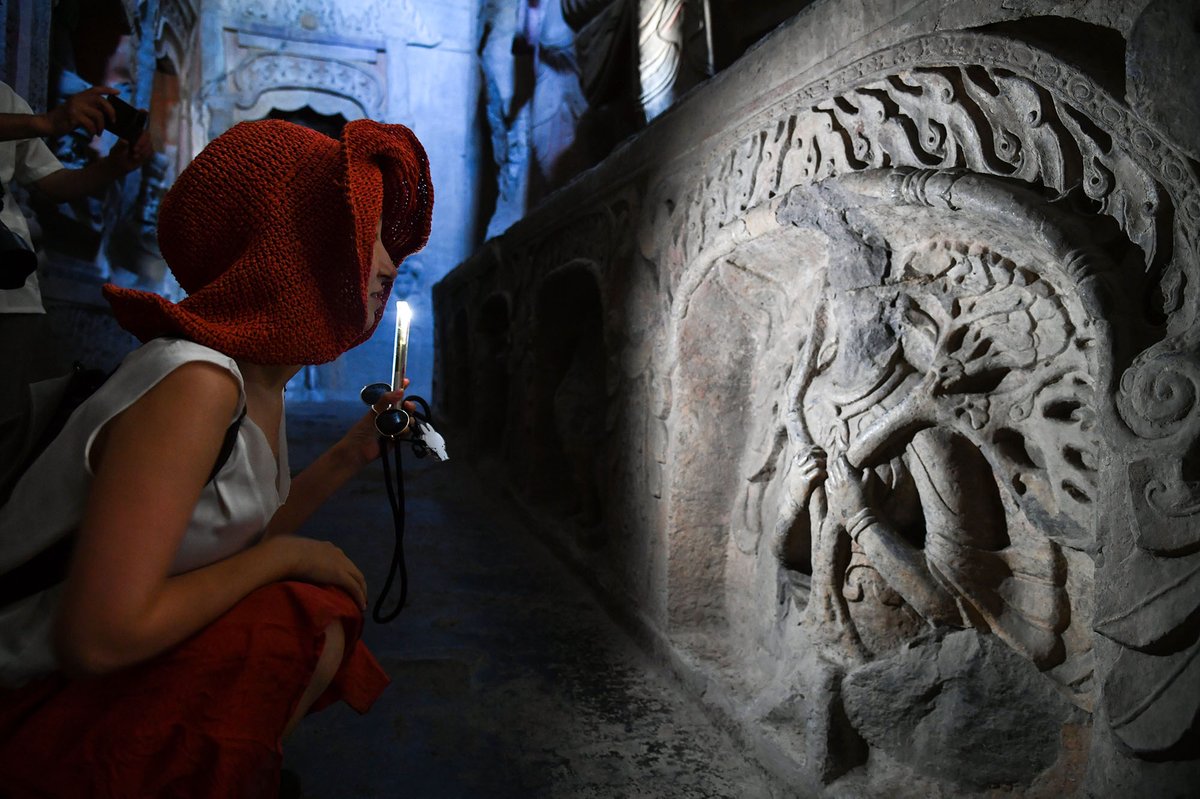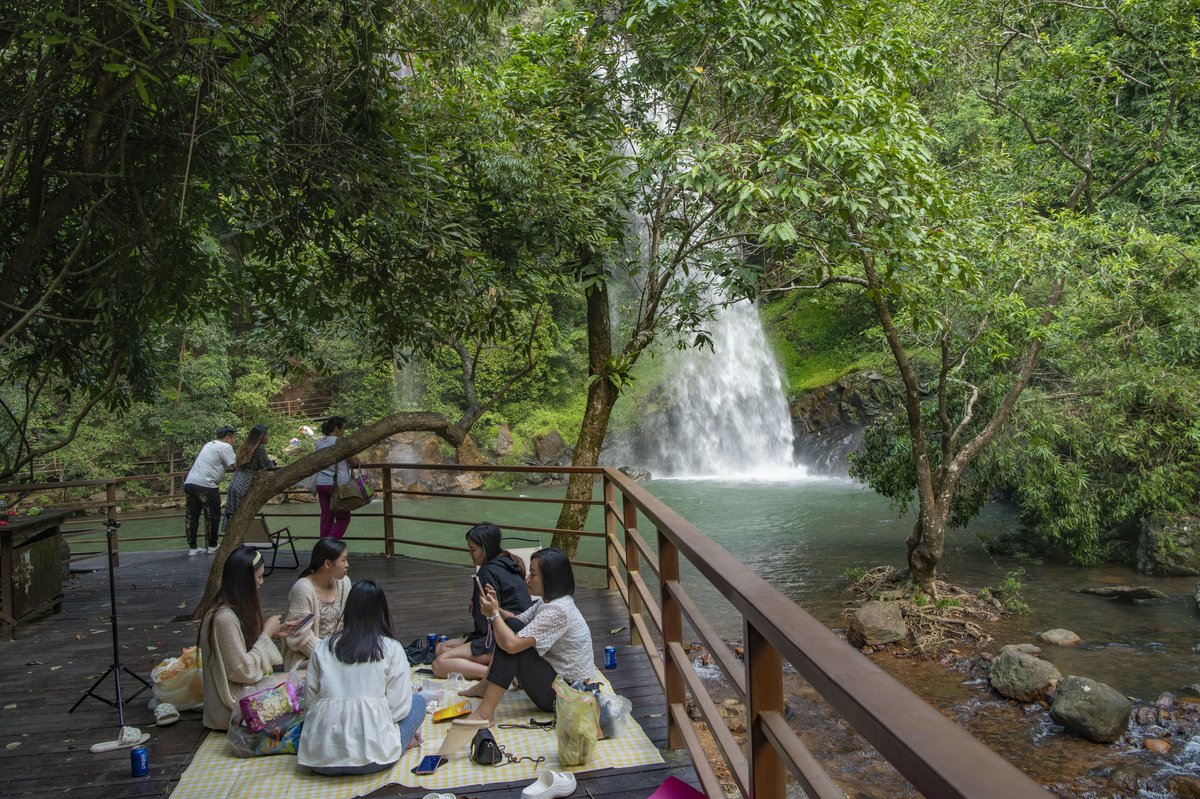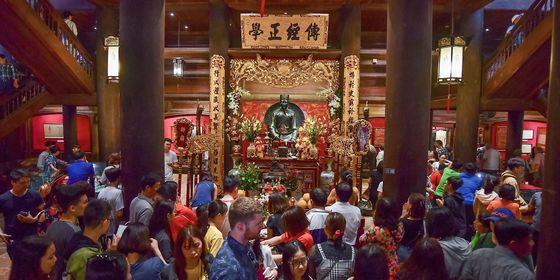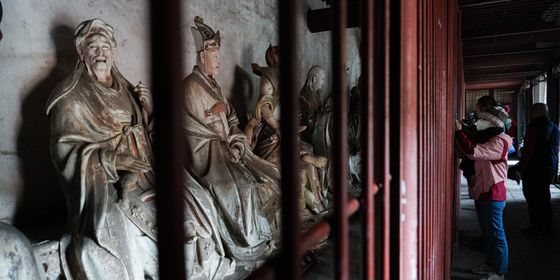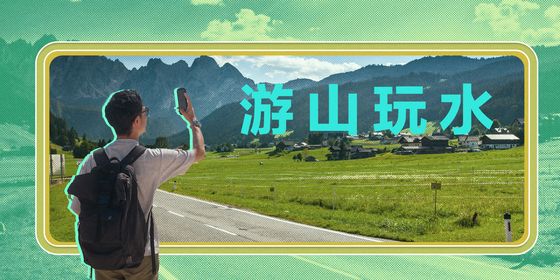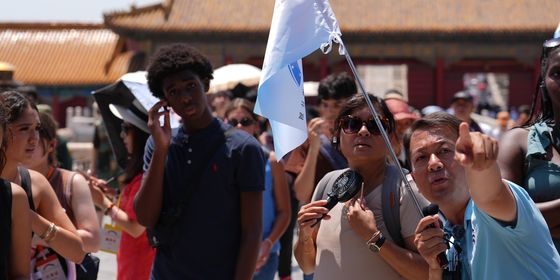Between crowded tourist hotspots and boring small towns, young vacationers struggle to find a middle ground
As if choreographed by an unseen conductor, hundreds of pigeons take flight over the open-air Sun Yat-sen Mausoleum Music Stage. They flutter against the backdrop of the ancient Greek-style theater nestled among the trees atop a mountain in Nanjing, Jiangsu province. The scene, part of most tourism commercials advertising the city, would be a serene blend of nature and architecture if not for the crowds of thousands that often fill one of China’s most popular travel spots.
While the commercials promise peace, in reality, “There are always more people than birds there. Even the pigeons have no place to land,” Wang Zifan, a local media professional, complains. Tourists trying to capture the perfect photo of themselves with the birds silhouetted against the marble spirit screen have ruined the once relaxing spot for Wang, who mostly avoids the place now. The crowds have only grown since China’s recent post-pandemic domestic travel boom. During this year’s Labor Day holiday, Nanjing welcomed more than 10 million tourists in five days.
Wang, like many other Chinese vacationers, has resolved to shun popular tourist sites for smaller, less famous places to visit. During the Lunar New Year holiday in February, she traded Nanjing’s pigeons for seagulls along the chilly shores of Weihai, Shandong province. “I like to observe the local way of life, whether by wandering through a public park or exploring a vegetable market. That’s the essence of traveling to me,” says Wang. She made no plans before the trip, woke up late in the afternoons, and strolled around an antique market hunting for vintage cameras and lenses.
Nowadays, so many Chinese tourists are perturbed by holiday crowds that seeking out unheralded destinations has become a trend known as “reverse travel.” According to a report by data analytics site Newrank, 2023 saw a fivefold increase in posts referring to “niche travel spots” on lifestyle app Xiaohongshu. The trend peaked during the Labor Day holiday this May, with multiple travel booking sites, including Mafengwo and Ctrip.com, reporting impressive growth in tourism to counties (administrative units smaller than cities). A survey by China Youth Daily in May found that over 70 percent of respondents born in the 2000s prefer to travel to “less popular, niche travel destinations.” Videos with the hashtag “reverse travel” have been viewed over 100 million times on Douyin (China’s version of TikTok).
However, escaping large popular cities doesn’t guarantee better experiences. The recent virality of niche travel spots has revealed formerly hidden gems to more travelers, and many small towns and rural areas aren’t equipped to handle the new tourist influx. Those who come with high hopes of idyllic breaks often instead find limited public transport, entertainment facilities, and charm. Some even report boredom.
Against the crowd
The reverse travel trend has seen surging bookings in smaller cities, driven mostly by young people looking for travel experiences away from the crowds on Shanghai’s Nanjing Road or in Beijing’s Forbidden City. Some of this began during the pandemic when strict quarantine regulations for entering China from abroad made domestic tourism the only viable option for many. The restrictions “sparked a big increase in domestic travel to city outskirts and nearby small towns,” Li Bin, professor of tourism science at Beijing International Studies University, told Cultural Monthly magazine in January 2023. The trend has accelerated since.
Wang Zhen (no relation to Wang Zifan), a 24-year-old student in Nanjing, spent this year’s Qingming Festival holiday in the small city of Taizhou, Zhejiang province. She viewed waves crashing against the rocks in the coastal town of Shitang, hiked Tiantai Mountain to see a waterfall featured in works by renowned Tang dynasty (618 – 907) poet Li Bai (李白), and sampled local cuisine at a food market. “The scenic spots are well preserved and not over-commercialized. Stalls at the popular food street served authentic local cuisine that I hadn’t heard of before,” Wang Zhen tells TWOC.
However, Taizhou wasn’t as convenient as more established tourist destinations. Attractive scenic spots were spread out, some 140 kilometers apart, and Wang Zhen often spent up to 20 minutes to get a car on ride-hailing apps. Traveling bumpy roads in the mountainous areas made her carsick, while many local coffee shops and convenience stores in Shitang were closed, presumably because their owners were on holiday too.
Wang remained content to trade inconvenience for the unobstructed beauty of nature with few tourists around. “The ocean view in Shitang is unique. I’ve seen some negative reviews about it online but you can’t expect the sea to always be glistening blue…So if you’re there to daka, you might not enjoy the trip as much as I did,” she says, referencing a social media travel trend of people visiting internet-famous hotspots solely to post photos online.
But social media is also part of reverse travel, even if self-professed free spirits like Wang refuse to admit it. “Aside from providing young people with better travel experiences with fewer crowds, reverse travel also meets their need for novelty and uniqueness,” Zhang Yan, director of the Cultural Tourism Research Center at the Shaanxi Academy of Social Sciences, told Beijing Youth Daily in May.
That means previously unheralded places are filling up as more visitors discover them on social media, and many are ill-equipped for the deluge of tourists. Handan, a city of 9 million in Hebei province, suffered overcrowding during the Labor Day holiday when it was listed as the seventh most popular “niche” travel spot by Mafengwo.
When TWOC visited the city that weekend, most hotels were fully booked. The Xiangtangshan Caves, which feature 1,500-year-old Buddhist statues and are one of the city’s most famous attractions, were chaotic. The parking lot was still full at 4 p.m., an hour before closing, while the few elderly staff members on hand did little to keep order in the lines or scan tickets at the entrance. There were only three carts, each with 12 seats, to take tourists up the mountain to the main site. Drivers had to hose down the overheated tour vans after each trip, all while puffing cigarettes underneath a prominent “no smoking” sign.
Many tourists on social media reported waiting up to two hours for the less than five-minute ride up the hill. The caves were equally crowded, with children scurrying around touching artifacts and tourists ignoring signs that forbid flash photography that could decolor the ancient pigments.
“The current growth in domestic travelers’ demand for small-town tourism is significantly faster than the adjustment speed on the supply side. Additionally, there is an imbalance in demand between cities, resulting in insufficient service supply in popular cities,” Cheng Chaogong, lead researcher at Suzhou-based company Tongcheng Tourism Research Institute, told Jiupai News in May.
Nothing to see here
Escaping the crowds doesn’t always mean a relaxing holiday. This April, Guan Ruyuan, a 24-year-old working in manufacturing, traveled to Yancheng, a city of 7 million people in Jiangsu. Attracted to the reverse travel trend by the promise of fewer people and a fresh experience, Guan found the trip disappointing because the city was too similar to her hometown in the same province. “I wanted to experience the unique local culture…but even the local dining district sold generic snacks like stinky tofu [which is found all over China],” Guan tells TWOC.
Sudden influxes of tourists may not even notably improve the local economy. For many unfashionable towns, “The limited scope of attractions makes it difficult to generate repeat visits or stimulate additional peripheral spending,” Deng Ning, vice dean of the School of Tourism Science at Beijing International Studies University, told Jimu News in 2022.
Nevertheless, some reverse travelers swear by their methods. One technique is to vacation during off-seasons. Zhai Peng, a 26-year-old office worker in Beijing, went “against the crowd” when she took a three-day trip to Hohhot, the capital of China’s Inner Mongolia region, in April before its famous grassland had become verdant.
Instead of riding a horse across the lush grassland like tens of thousands of tourists in the summer, Zhai visited Tibetan Buddhist temples where she donned traditional Mongolian attire and snapped photos. At the Inner Mongolia Museum, she turned up and bought tickets on her day of entry, unthinkable in Beijing where most museums require advanced reservations.
High demand at renowned sites like the Forbidden City or Terracotta Army Museum in Xi’an, Shaanxi province, means visitors must book appointments weeks in advance. Some netizens share their strategies for securing appointments for these traditionally must-see sites, posting about early morning alarms online.
Many reverse travelers are sick of this inflexibility. A 2023 travel report by Tencent Marketing Insight and Tongcheng Tourism Research Institute found that 65 percent of the over 2,000 people polled didn’t want to plan out every minute of their vacation. Meanwhile, the China Youth Daily survey revealed that nearly half of those engaging in reverse travel hoped for a slow-paced vacation and to immerse themselves in the local culture.
Some have taken this to the extreme by engaging in “lying flat travel,” where they go to small cities and stay in inexpensive but luxury hotels, sleep in late, order takeaway meals, and rarely leave their rooms, all to escape the rat race. The phrase originated from a viral social media post in August 2022 about staying in a luxury hotel in Hegang, a former coal-mining city in Heilongjiang province, for just 300 yuan per night. Many overworked urbanites followed suit, sharing how they escaped to small towns to veg out.
A key driver of travelers heading to lesser-known cities is cost. While the Labor Day holiday saw record numbers of domestic travelers, average spending per person remained below pre-pandemic levels according to data from China’s Ministry of Culture and Tourism. Hotels in lesser-known cities can be five times cheaper than in Beijing or Shanghai.
News stories about tourists being ripped off, such as when thousands were stranded in tropical Hainan province at the end of the Lunar New Year holiday this year amid soaring flight prices, make the affordability of off-beat destinations appealing to budget-conscious young people.
When people travel matters, too. Zhai and her boyfriend’s three-day stay at a mid-range hotel in Hohhot cost less than 600 yuan per person. During the peak summer season, a room is around three times that. But while Zhai tells TWOC that she and many of her friends now try to vacation outside of busy public holidays, this is impossible for many since China’s labor laws guarantee workers with less than 10 years experience only five days of paid leave (outside of public holidays) a year.
No destination or time is perfect. Either visitors see famous sites and face the crowds, or head off the beaten track and endure worse accommodation and transport options. “With the crazy amount of people traveling now, you have to let go of something if you want some peace and quiet,” says Zhai. Besides, “For us living in Beijing, going anywhere is reverse travel.”
The Quest for Quiet: Can “Reverse Travel” Save China’s Tourists From Holiday Crowds? is a story from our issue, “Viral Attractions.” To read the entire issue, become a subscriber and receive the full magazine.





